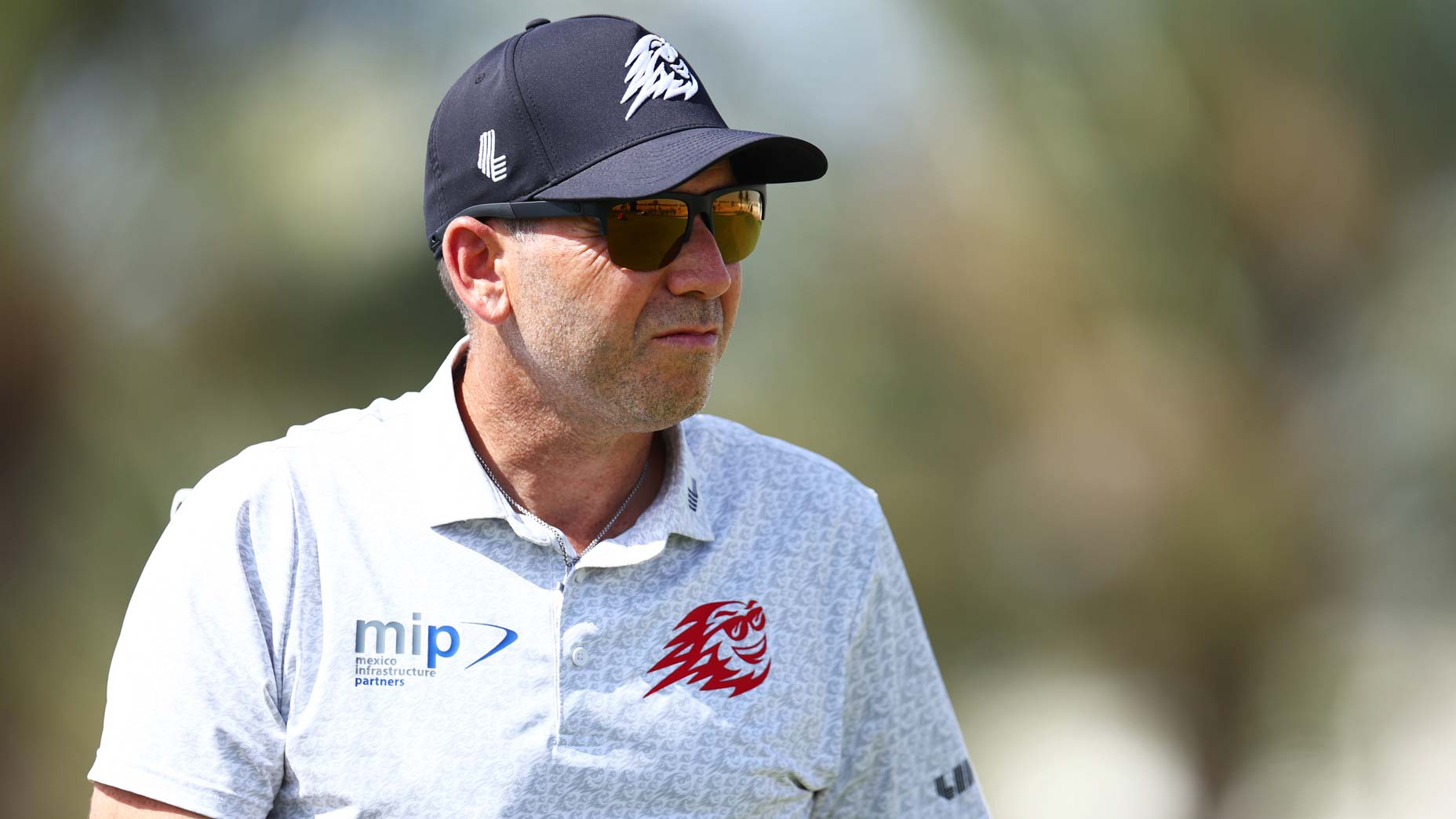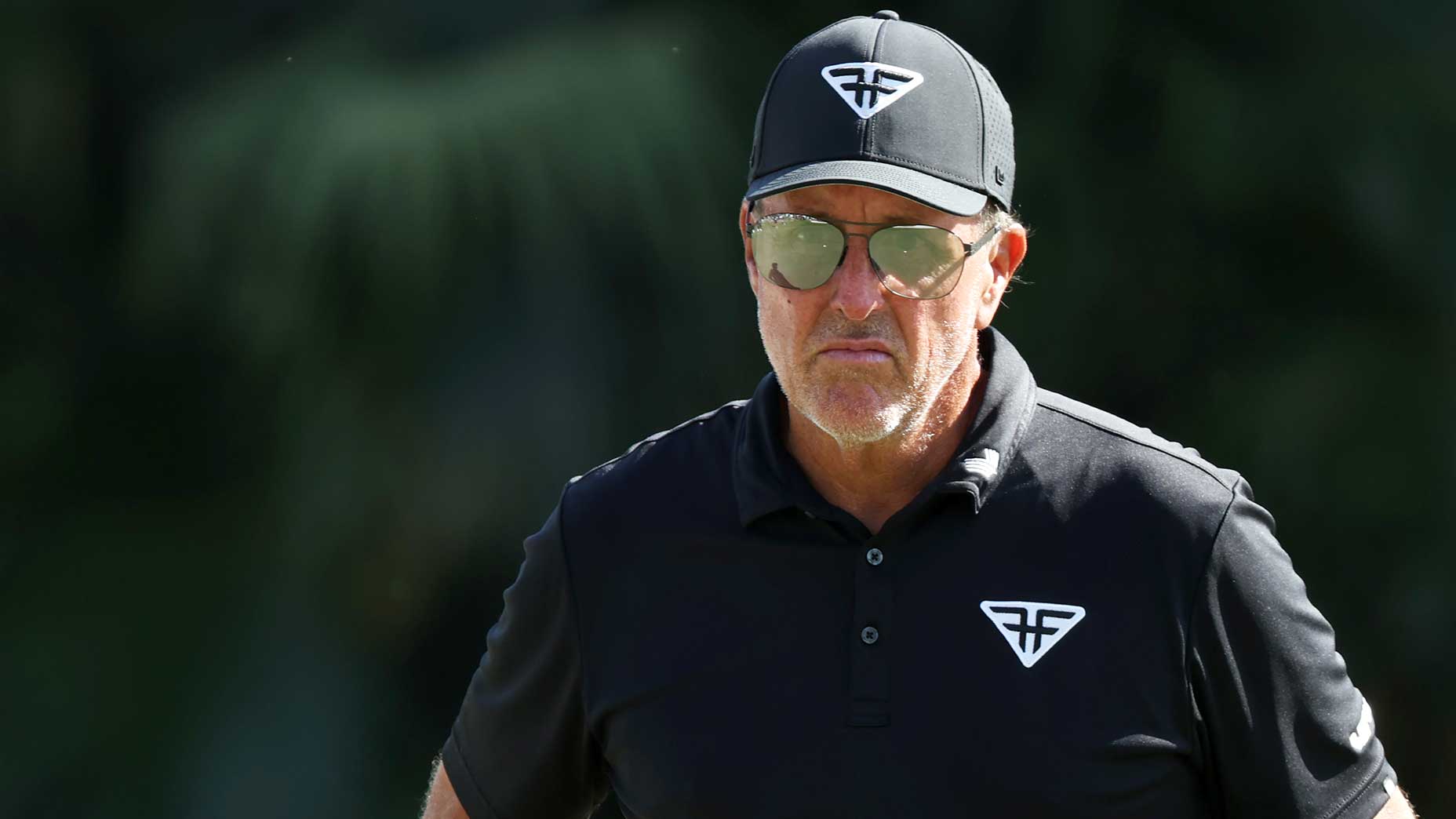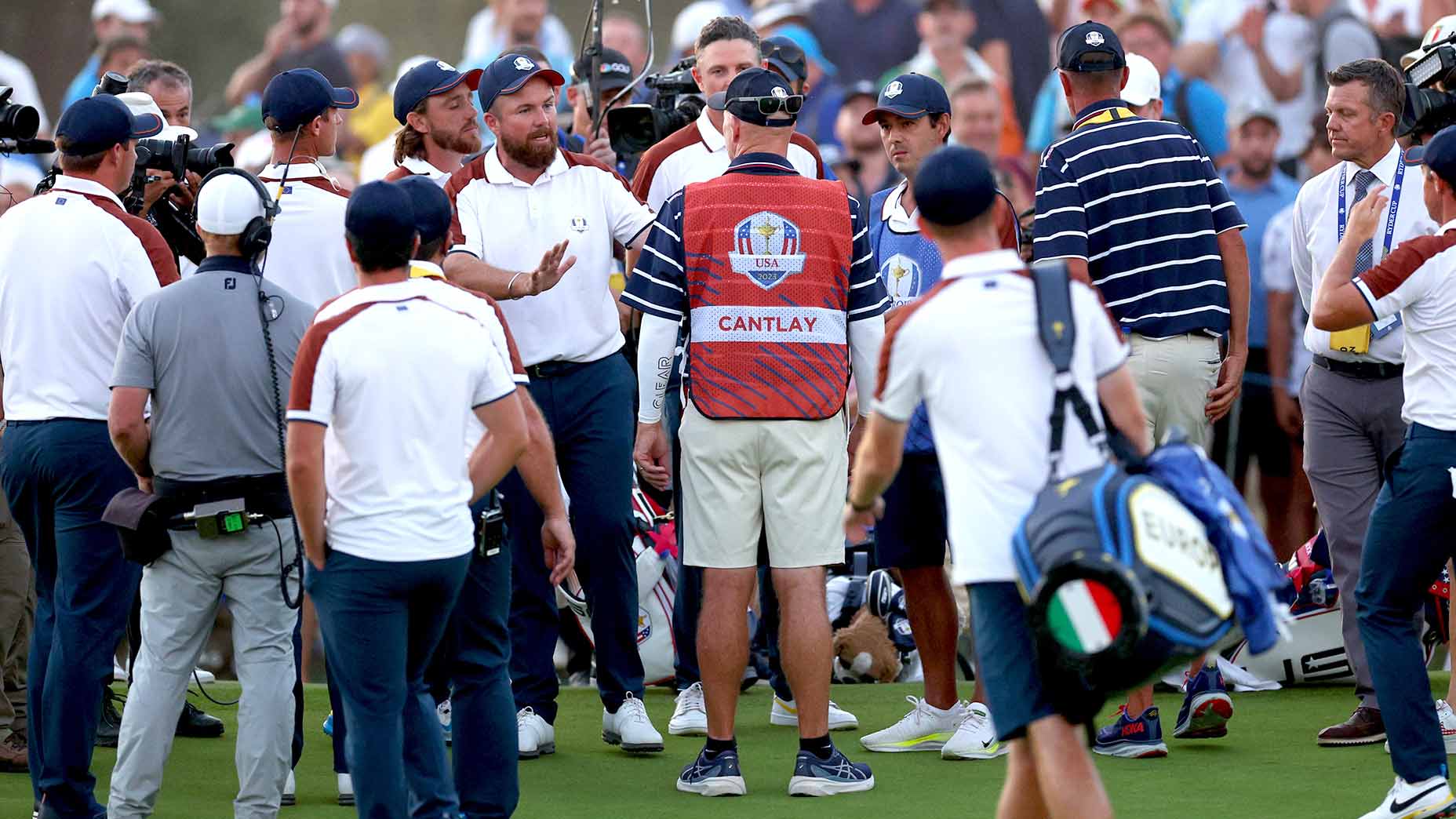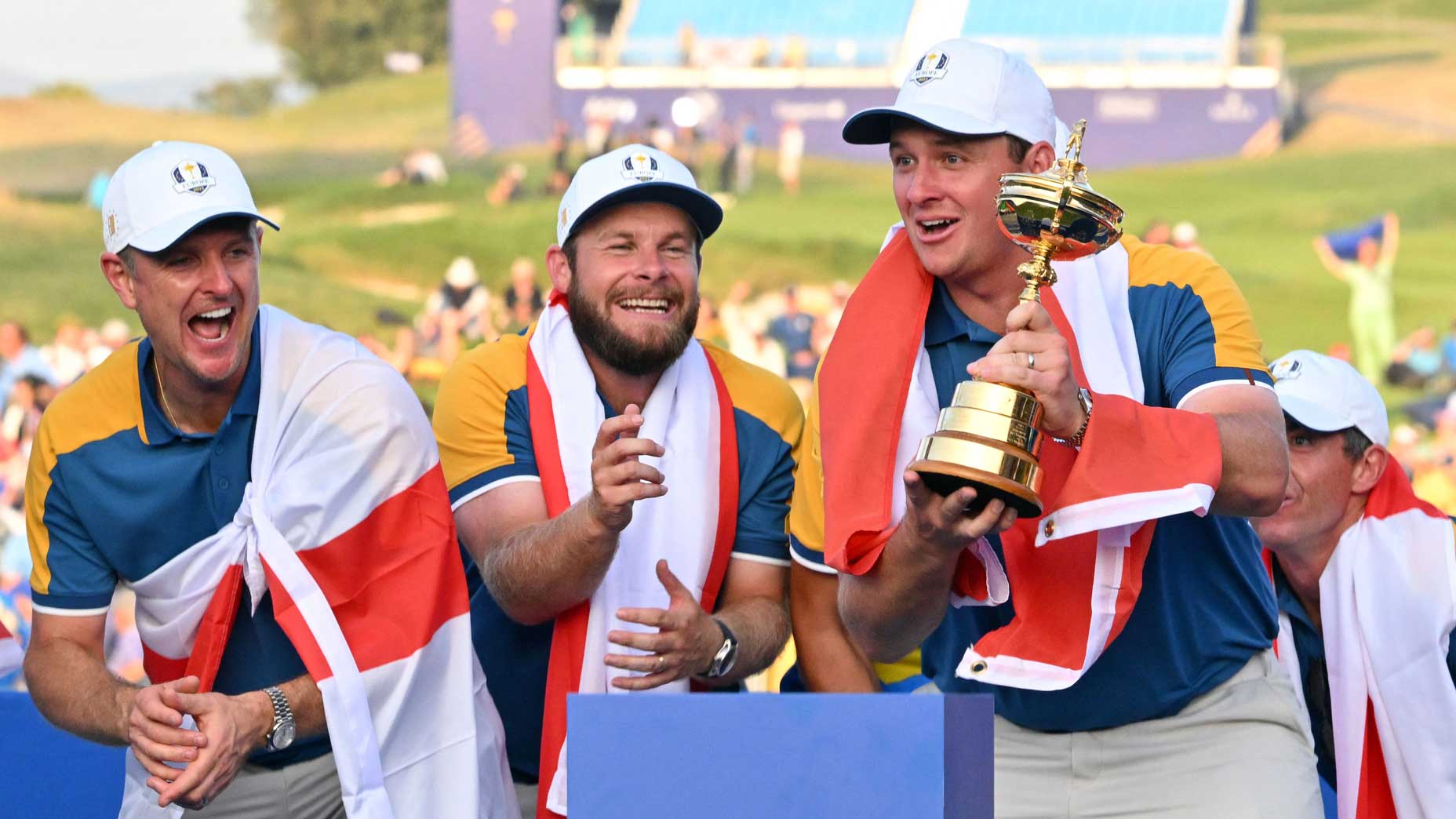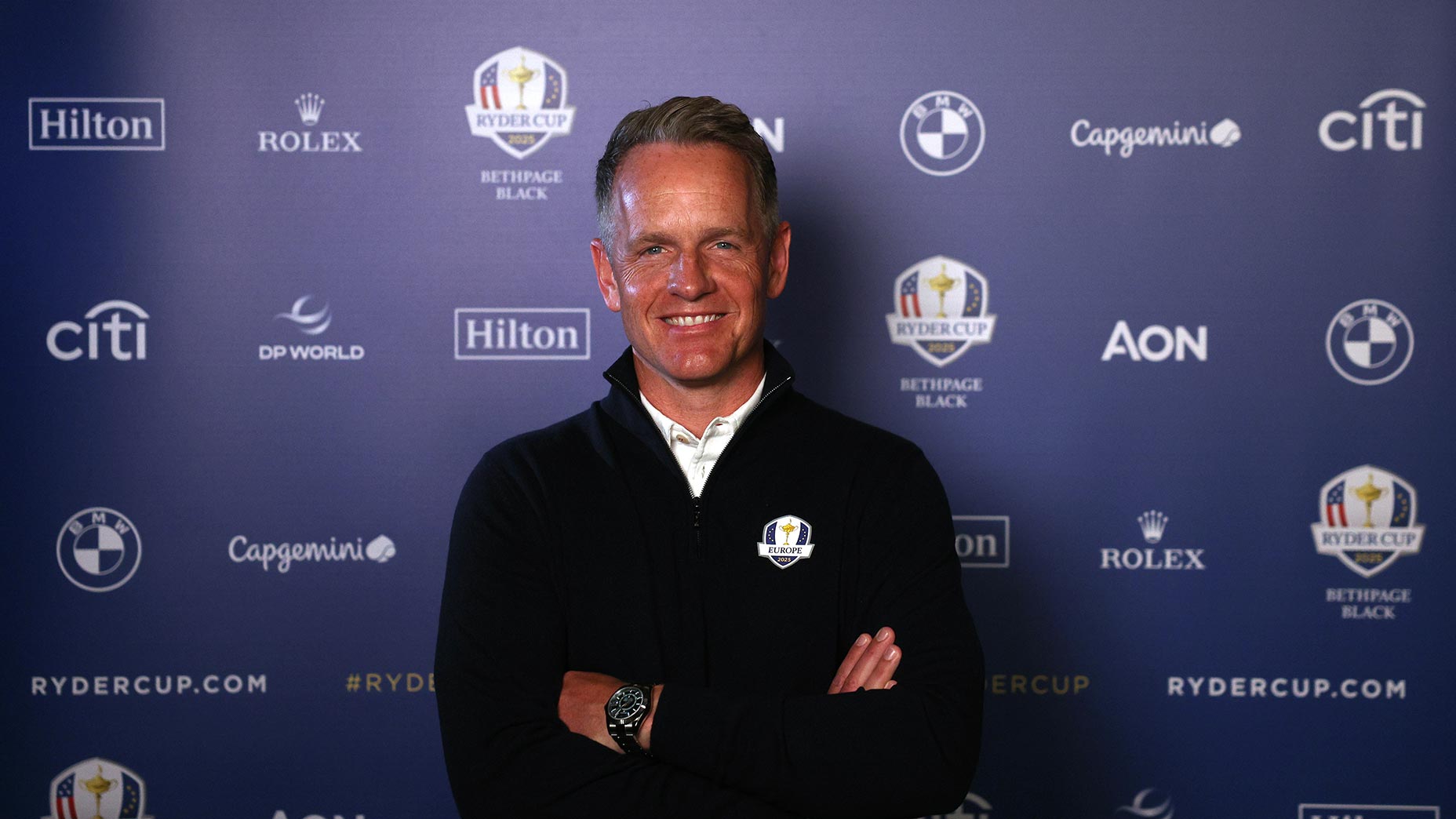Time to panic? 7 things we learned from Europe’s (mostly) disastrous Day 1 at the Ryder Cup

Hatton was Europe's Hero on Friday.
Getty Images
HAVEN, Wis. — Well, that didn’t go well. This must be how American golf fans feel at the Ryder Cup, and I, GOLF.com’s resident European, don’t like it. Not one bit. For a moment we got a glimpse of what could’ve been a truly disastrous day, and while there’s not much upside to what European fans did witness, the seeds of a potential comeback are there. Morale is low, but perhaps trending ever-so-up. It ended 6-2, but in the words of Rory McIlroy: “We can come back from 6-2.”
Let’s try to make sense of what happened.
1. It could’ve been worse
First, let’s be positive. There was a moment late on Friday when the U.S., after going 3-1 in the morning session, could’ve swept the afternoon sessions. Bryson DeChambeau and Patrick Cantlay were 1 up walking down the 18th fairway when Tommy Fleetwood sent his ball sailing into the water on 17th — a match that the U.S. had clawed from 3 down to all square.
To salvage half points from those two matches, and keep the contest within four rather than a potential six points, saved any hope of keeping this Cup competitive. One swept session — or anything close — and Europe is suddenly right back in this.
2. Hatton’s heroics could be the spark
When he needed to most, Tyrrell Hatton smashed a 318-yard drive down the middle of the tricky 18th hole, laced an iron from 202 yards to seven feet, and made the putt. Hatton’s a natural spark plug in the calmest of times, but in this intensely charged Ryder Cup atmosphere, he’s perfectly placed to supercharge this European team. He has all the makings of a future Ryder Cup hero.
Give me Hatton in the first group out tomorrow. Pair him with Poulter or something. Could be the defibrillator to bring this European team back to life.
— LKD (@LukeKerrDineen) September 24, 2021
3. John Rahm is the team’s backbone
Another positive — because we’re trying to be positive around here — is Jon Rahm! The man played exactly the way World No. 1s should play in these moments. He’s a unique breed in that he’s seemingly built to succeed in match play just as well as he is stroke play. He’s Europe’s best horse this week, and riding him for 36 more holes on Saturday is a challenge he’ll undoubtedly relish. Good news, too, because Europe will need him.
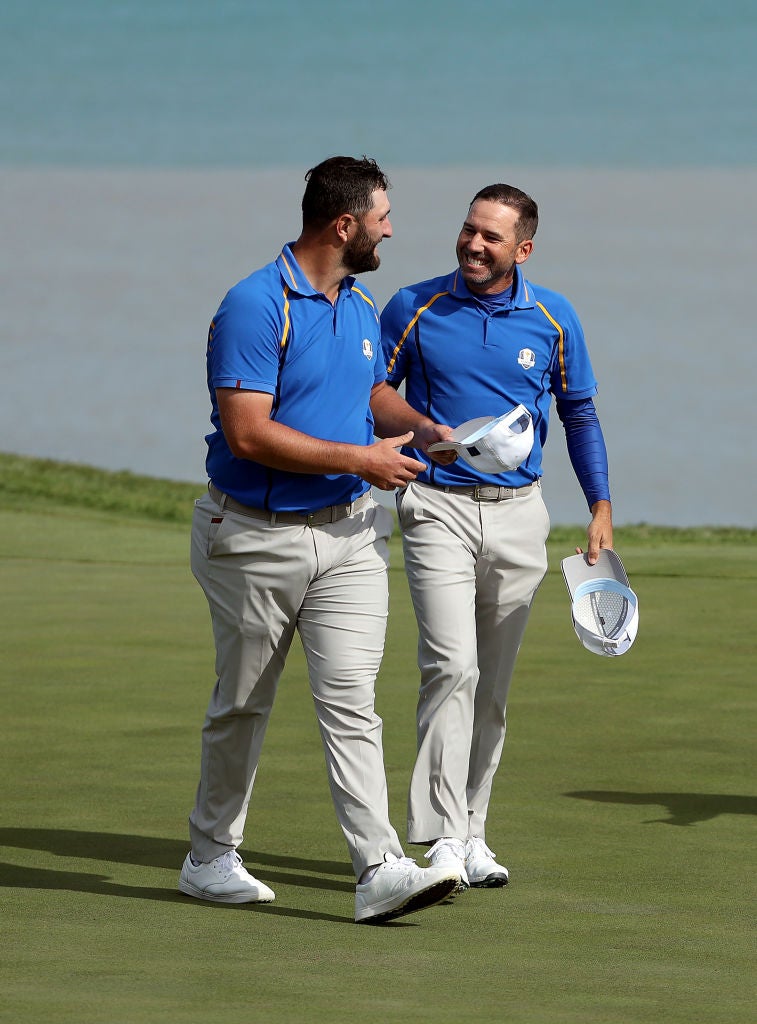
4. Benching Sergio was probably a mistake
Alright, now that the positives are established, time for some real talk about what needs work.
The story of Europe’s Ryder Cup successes through the years is best told through its pairing love stories. The flittering summer romances that emerge quickly and live long in the memory: Seve and Olazabal. Faldo and Westwood. Garcia and Parnevik. Stenson and Rose. Fleetwood and Molinari.
At Whistling Straits, we’re still stuck trying to figure out what the 2021 equivalent is going to be. Eight matches were contested on Friday, and fans got eight different pairings. To be fair, Harrington’s strategy wasn’t unique. U.S. captain Steve Stricker broke up all his morning pairings, too. But Stricker’s strategy also helped his team to a four-point lead. Stricker’s job was to strategize a way to fix this U.S. team; Harrington’s is to abide by the DNA that has been core to Europe’s success for decades. Only one captain, so far, has succeeded.
Sergio winning matches with shot tracers like these is aspirational pic.twitter.com/LSXhjMqp3C
— LKD (@LukeKerrDineen) September 24, 2021
Along those lines: Garcia and Rahm were primed to assume that flagship partnership role in 2021, and Paddy sent Garcia to the bench in the afternoon. Maybe it was the right decision, and easy to critique in hindsight. Nevertheless, it’s a decision Harrington has to own — and in doing so, accept that a third of the way through the competition, his team is lacking the core trait that has been an integral part of winning European teams of years past.
5. Is the old guard becoming a crutch?
But captains don’t hit the shots, players do. And there were a few players that we expect to hit good shots that simply didn’t on Friday. We’ll get to Rory, but first, let’s focus on the English old guard contingent: Ian Poulter, Paul Casey and Lee Westwood, who combined for zero points in four matches.
The role these players served was to provide intangible value for this European team. To be “the glue for this team,” as Casey described Poulter, and a steady hand for the young guys. So far, all they’ve provided is intangible results.
I had a lingering fear coming into the event that this European team was a little too eager to return to what felt sentimentally comfortable, rather than forge something anew. Playing Westwood, who hasn’t had a top 20 in any competition since March, on back-to-back days is perhaps the most obvious example.
I can’t help but fear that what was once the bedrock of this team is quickly becoming a crutch. I hope these legends prove me wrong over the weekend.
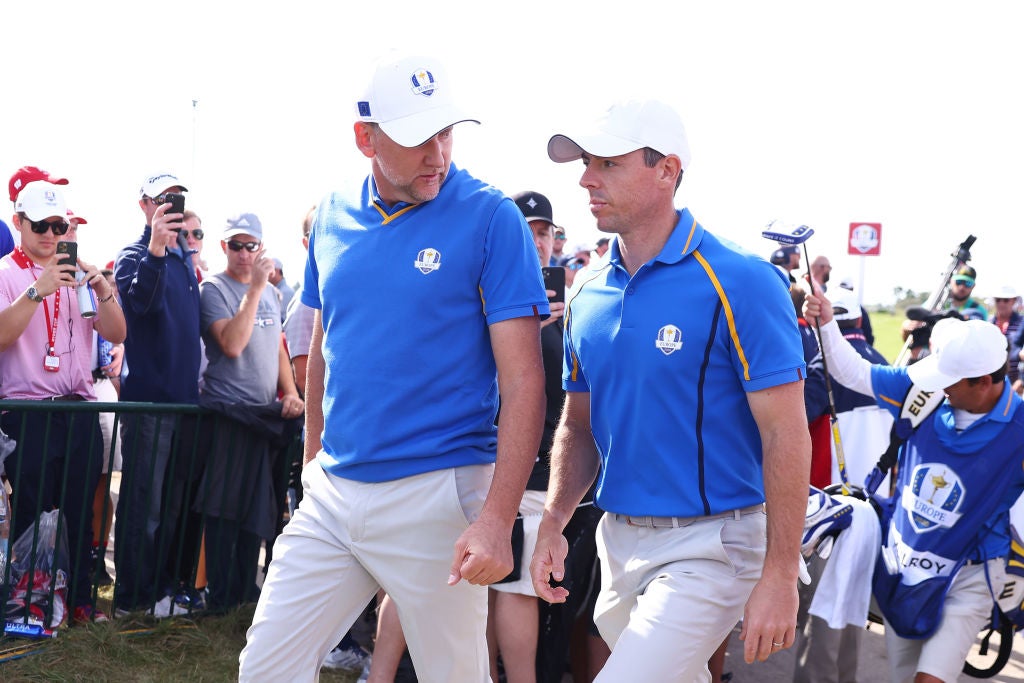
6. Rory looks exhausted
The nature of the beast that is match play means you can play well and lose matches through no fault of your own. That’s true even for the best of players. It’s not that Rory lost, it’s the uninspiring manner of those losses: 5 and 3, then 4 and 3. Everything seemed to be going wrong, and frustratingly, there were moments when he felt borderline absent from the competition. On Saturday morning, he literally will be — on the bench for the first time of his Ryder Cup career.
The nature of Rory’s charm is that he’s so mercurial. It’s wonderful when the going is good, but then you get days — and tournaments — like this. It can make for a frustrating situation, where Rory is simultaneously both the best player on the team that you can’t actually build the team around.
It’s easy to forget that Rory is still a new dad whose been playing largely nonstop for the better part of the year. He’s talked candidly about feeling exhausted. Unfortunately, it seems like that exhaustion is hitting him at the worst possible time both for him, and for Europe.
7. The fans are fiesty
It didn’t take long for the Wisconsin crowd to take a turn toward heckling on Friday, and things got pretty inappropriate at points. I saw both Hovland, Hatton and Fleetwood’s pre-shot routines interrupted by screaming fans. No one’s making excuses, but there are practically no European fans on the ground here at Whistling Straits. Team Europe needs to prepare for an unabashedly hostel crowd over the weekend and depend solely on their clubs to respond back.




